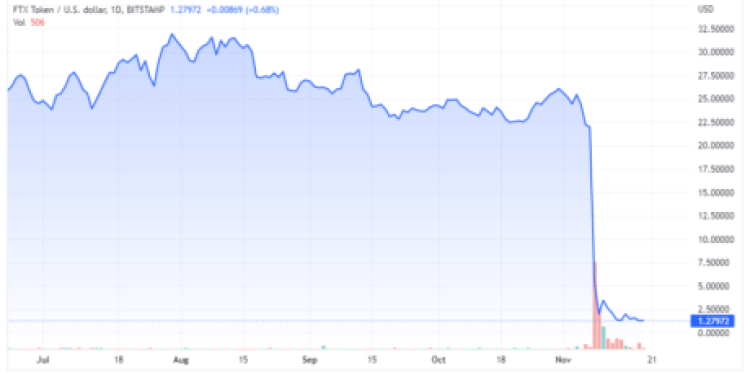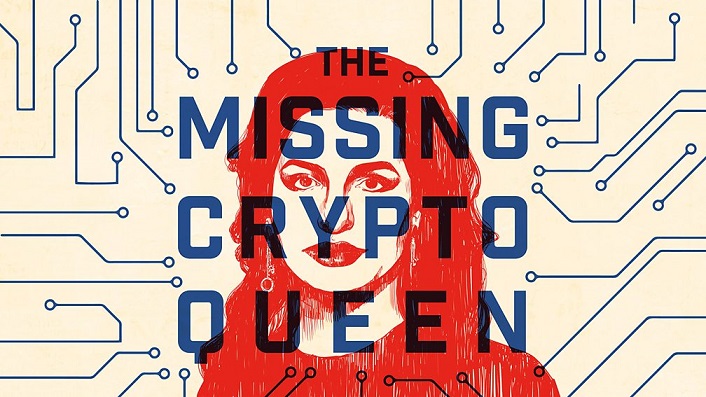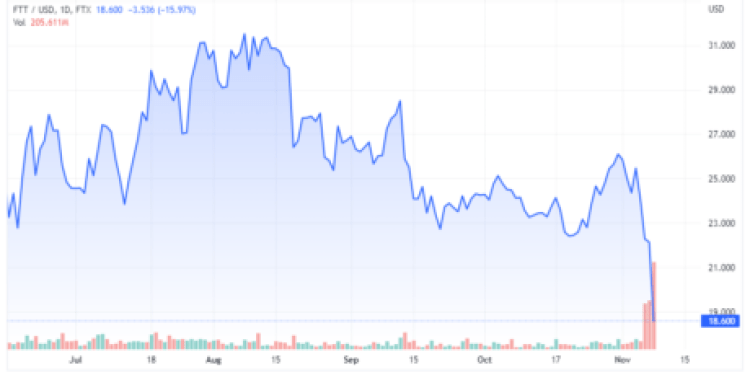What’s Moneyland? That’s what the first half of this “The Missing Cryptoqueen” episode is about. The second part is about Frankfurt, the city where Jamie and Georgia think that Dr. Ruja might be hiding. In any case, Moneyland is that mythical place where the money that millionaires and corporate entities want to disappear goes. The concept comes from british journalist Oliver Bullough, who “has spent many years investigating the ways illicit money flows around the world, including in Eastern Europe.” He’s this episode’s star guest.
The Frankfurt part, however, is the most exciting segment of the whole podcast so far. The production team really stepped up their investigative game and got closer to Dr. Ruja than any police department ever will. We know our summaries are phenomenal, but we recommend that everyone listens to that second part at least.
Remember, you can download episodes directly from the BBC, or listen to “The Missing Cryptoqueen” through Apple, Spotify, or iVoox.
In any case, let’s go to Moneyland!
About “The Missing Cryptoqueen,” Episode Seven – “In Plain Sight”
Is Dr. Ruja alive? Before even mentioning Moneyland, producer Georgia Catt confirms a possible Dr. Ruja sighting to presenter Jamie Bartlett. The staff of an Athens restaurant remembers someone with Dr. Ruja’s characteristics as part of a party of six. What they’re not sure about is exactly *when* did this happen. Interesting. The possibility of a Dr. Ruja running around Europe might’ve been the catalyst for the Frankfurt part of the episode. But first, let’s get to Moneyland.
After hearing the basic facts of the OneCoin case, journalist Oliver Bullough tells Jamie that once upon a time “Albania descended into anarchy because of a pyramid scheme.” As the crypto world has confirmed lately, these scams can be dangerous. Then, Bullough explains what Moneyland is. Rich and smart people can construct their “assets in such a way that they become invisible.” They can still use them to “buy political influence and nice houses and yachts.”
When it comes to other people trying to find those assets, though, they turn invisible. So, “that’s what Moneyland is, Moneyland is the place where these assets go.” This breaks Jamie, who asks if there’s zero chance of finding them. Bullough tries to cheer him up by saying “It’s not zero chance. It’s, yeah. I mean, it’s been very well hidden, right?” And that’s not the most depressing part of the episode. After that, they inform us that the UK has stopped their investigation into OneCoin. They just gave up.

FTT price chart for 11/18/2022 on FTX | Source: FTT/USD on TradingView.com
Moneyland Leads To Frankfurt
When things look darker, “The Missing Cryptoqueen’s” production team gets into high gear. They turn their investigating arm up a few notches and focus on the Internet. “We put so much online now, and that information can betray us. And that’s what took us to somewhere we think Dr. Ruja might be.“ That somewhere is Frankfurt. Our heroes determine that Dr. Ruja’s ex-husband and her hidden daughter live in the city. Plus, her best friend seems to have visited Frankfurt recently.
They get there and they find nothing, not a single trace. This part is excruciating. However, it leads Jamie and Georgia to a high-luxury neighborhood that feels like the place Dr. Ruja would live. This is where Monelyland leads to. In there, they find a charismatic but annoying postman that might remember the name Ignatova. They leave that storyline open and “The Missing Cryptoqueen” returns to England.
To finish the episode off, Jamie has a very interesting discussion with Cameron, “a UK-based OneCoin promoter.” Is he a true believer or is he just defending an extremely lucrative business? Cameron goes all in and carries the OneCoin party line to the very end. Wow. This might be the most surprising part of the whole episode.
Quotes From Episode Seven of “The Missing Cryptoqueen”:
Oliver Bullough, explaining how money can disappear:
“If you are rich enough and well advised enough or clever enough, you construct your assets in such a way that they become invisible. They still exist, you can still use them to buy things, you can still use them to buy political influence and nice houses and yachts. But when it comes from someone trying to find them, whether that’s a journalist or a police officer, the assets are invisible. And so that’s what Moneyland is, Moneyland is the place where these assets go.”
Jamie Barlett on what led them to Frankfurt:
“There’s one place we haven’t looked, not really looked. And it’s probably the most obvious place of all, the Internet. We put so much online now, and that information can betray us. And that’s what took us to somewhere we think Dr. Ruja might be. Not Athens, Frankfurt. It took weeks of extremely boring internet research and painstakingly going back through everything we’ve learned so far.”
Extra Material, about “Moneyland”:
In The Guardian’s review of Oliver Bullough’s “Moneyland,” they quote a metaphorical definition of the novel term:
“He conceives of it as a secret, parallel world, almost like something from a fairytale: “The very wealthiest people … have tunnelled into this new land that lies beneath all our nation states, where borders have vanished. They move their money … and themselves wherever they wish, picking and choosing which countries’ laws they wish to live by.”
The Guardian also says:
“He is surprisingly successful at getting some of the architects of the offshore world to open up, and is sensitive to the fact that some of its users have good reason to avoid governments, such as rich dissidents fearing the politically motivated confiscation of their assets. He also accepts an argument frequently put to him in notorious tax havens: that wealthier, less criticised countries such as Britain have been equally involved in building and maintaining Moneyland.”
Episode Credits
Presenter: Jamie Bartlett
Producer: Georgia Catt
Story consultant: Chris Berube
Editor: Philip Sellars
Original music and sound design: Phil Channell
Original music and vocals: Dessislava Stefanova and the London Bulgarian Choir
Previous Companion Guides For BBC’s “The Missing Cryptoqueen” Podcast:
Ep. 01 – https://www.newsbtc.com/news/bitcoin/ep01-dr-ruja-companion-guide-for-bbcs-the-missing-cryptoqueen-podcast/
Ep. 02 – https://www.newsbtc.com/news/bitcoin/ep02-btc-killer-companion-guide-for-bbcs-the-missing-cryptoqueen-podcast/
Ep. 03 – https://www.newsbtc.com/altcoin/ep03-onecoin-companion-guide-for-bbcs-the-missing-cryptoqueen-podcast/
Ep. 04 – https://www.newsbtc.com/scams-and-fraud/ep04-onelife-companion-guide-for-bbcs-the-missing-cryptoqueen-podcast/
Ep. 05 – https://www.newsbtc.com/scams-and-fraud/ep05-mlm-companion-guide-for-bbcs-the-missing-cryptoqueen-podcast/
Ep. 06 – https://www.newsbtc.com/scams-and-fraud/ep06-dealshaker-companion-guide-for-bbcs-the-missing-cryptoqueen-podcast/
Featured Image: The Missing Cryptoqueen’s logo, from the BBC | Charts by TradingView










 (@DylanLeClair_)
(@DylanLeClair_) 
